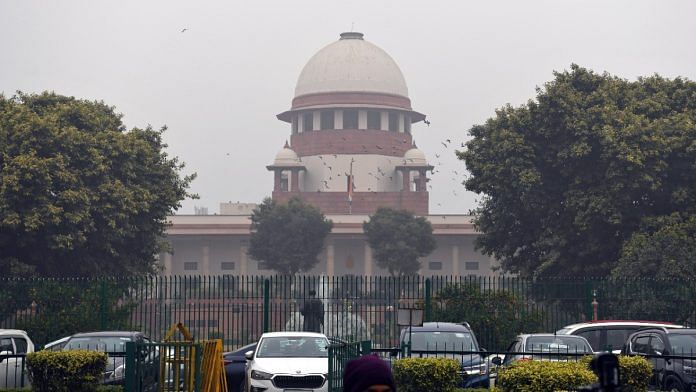New Delhi: The Supreme Court Friday took cognizance of the termination of six women judicial officers, who claimed the Madhya Pradesh High Court removed them without any show-cause notice or departmental enquiry. A notice asking to show cause, they submitted, is a requirement under rules governing the services of subordinate court judges.
A bench of justices B.V. Nagarathna and Sanjay Karol directed the high court registrar general to respond to the allegations of the six judges, who said the administrative committee of the high court, which recommended their termination, erroneously concluded that disposal of work assigned to them was not satisfactory.
The women judges said a large part of their tenure was spent as trainee judges, and was followed by the Covid-19 pandemic during which courts were functioning in a limited manner. They said if given a chance, they would have placed the facts before the administrative committee to remove the doubts that led to their job termination.
The complaints were sent by three of six women judges, on the administrative side, to Chief Justice of India D.Y. Chandrachud in early December. Taking note of the grievances, the CJI registered the complaint as a petition and ordered its listing before a bench for judicial adjudication. ThePrint has seen the complaints, which said the judges faced non-uniform allotment of judicial work and an acute dearth of trained, experienced staff.
According to them, the administrative committee of the high court, while considering the cases of 393 civil judges, recommended the termination of services of the six women judges in May 2023. This proposal was approved by the full court later that same month.
Incidentally, ThePrint has learnt that a petition filed by the three women judges on the judicial side was dismissed on 7 December by an apex court bench led by Justice Hrishikesh Roy.
Also Read: More women judges a constitutional imperative for better justice, says Justice Nagarathna
What women judges said in complaints
According to complaints sent to the CJI, the women judges were hired in 2018 and remained in training for a year and a half before they assumed proper positions as civil judges.
The first phase of their training continued for 12 weeks, from December 2018 to February 2019. On the directions of the high court, they attended another induction programme from March 2019 to April 2019, followed by two more in July and then in December that same year.
While they were given independent judicial work in May 2020, this coincided with the Covid-19 pandemic during which the judiciary was forced to restrict its functioning. All judicial work was suspended for a month in subordinate courts across Madhya Pradesh.
The circular that restricted the functioning of trial courts was issued by the high court and extended from time to time, due to which subordinate courts only dealt with exceptionally urgent matters. This, according to the complaints, continued till January 2021.
Therefore, the unit criteria of assessment of work done by judicial officers also remained suspended till January 2021, it added.
Thereafter regular physical functioning of courts in respect of all categories of cases began, though in some districts it resumed much later. For instance, in Harda where one of the terminated women judges was posted, offline hearings resumed only in February 2022.
The initial work allotted to the women judges, as claimed in the complaints, was not substantial but ancillary tasks such as recording of statements under section 164 of the CrPC or Negotiable Instruments Act cases.
Though the workload was immense, the nature of cases marked to these judges did not weigh much when it came to work assessment of judicial officers. Units marked for these categories of cases are insignificant compared to others, the judges claimed.
A judicial officer’s ability to fulfil certain quantitative targets in terms of the work he/she does is ascertained based on the aggregate of units earned in a day, month, quarter or year.
During the second wave of the pandemic, some judges were forced to take leave owing to standard protocol after at least one of their family members had tested positive for the infection. One of them suffered a miscarriage as she could not take maternity leave and undertook excessive work and exertion.
According to the rules, the women said, their probation period ended in 2022 and, hence, they were deemed to have been confirmed for the post of civil judge. Therefore, their services cannot be dispensed with on any ground without following the procedure laid down in the Madhya Pradesh Civil Services Rules, 1966, they said.
The rules necessitated the issuance of a show-cause notice to them, they added.
The judges further submitted that they had discharged their official obligations diligently. Yet, none of the annual confidential reports (ACRs) were communicated to them and they procured copies only in 2023 through RTIs.
(Edited by Amrtansh Arora)



